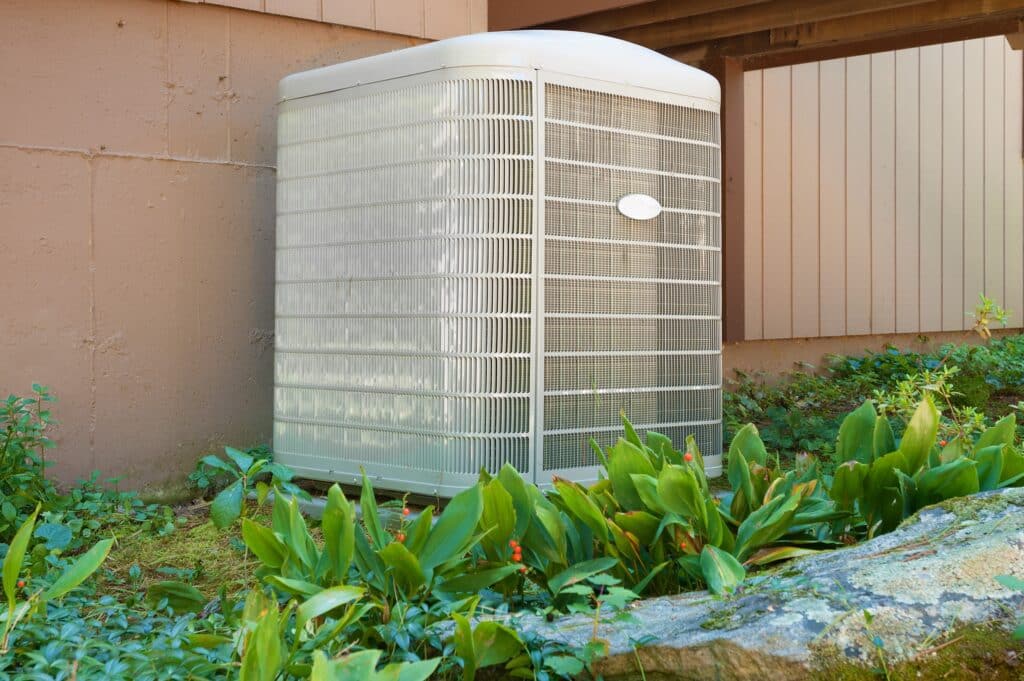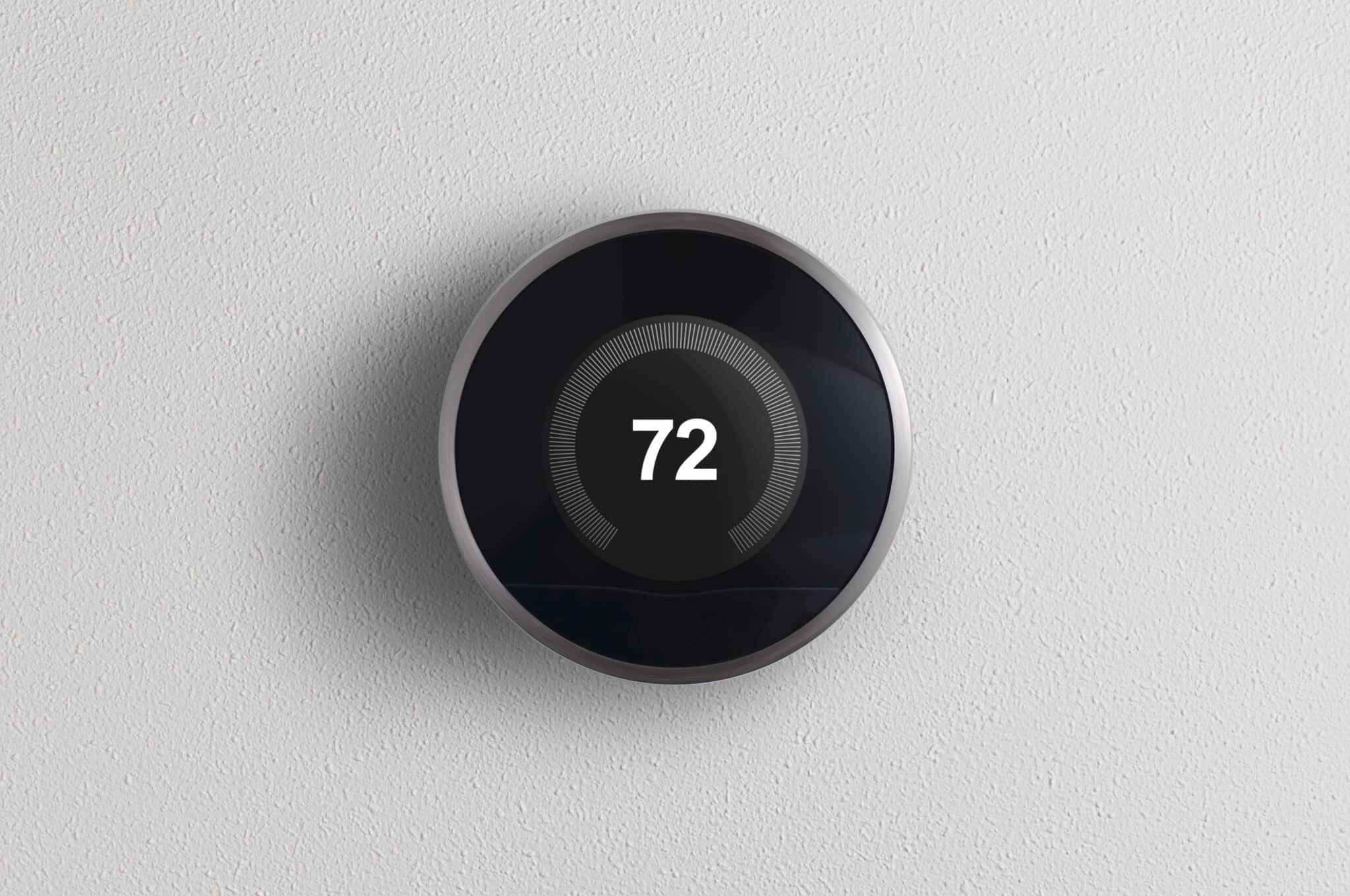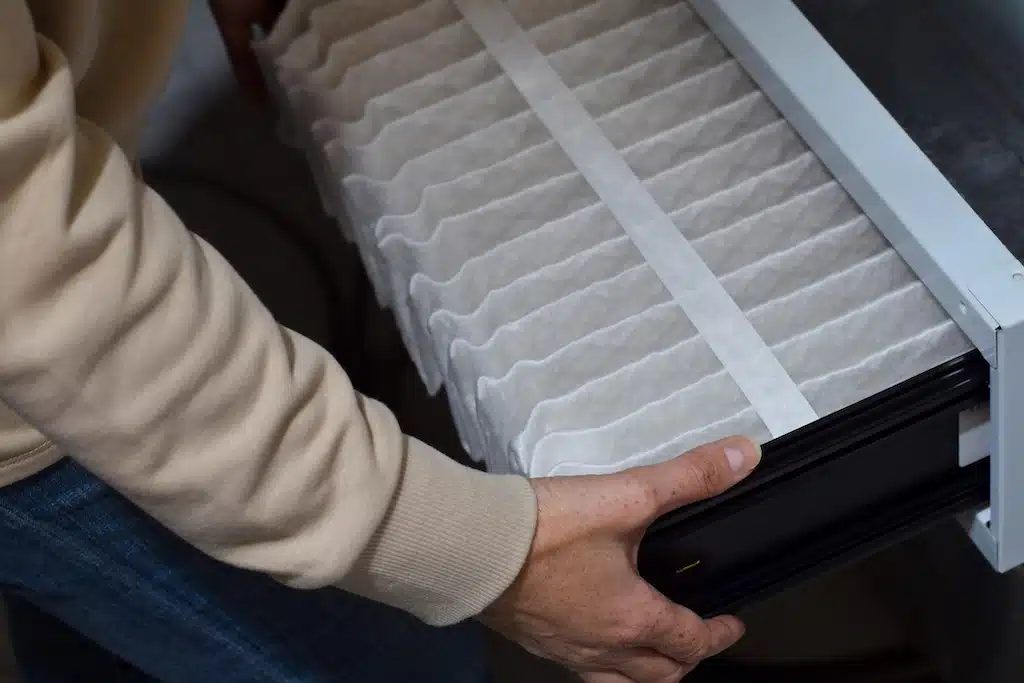
Leveraging Data Analytics to Improve HVAC Efficiency in Dallas
Are you sure your HVAC system is performing at its peak efficiency? HVAC efficiency is more than just lowering energy costs—it’s about optimizing comfort, reducing wear, and extending system life. With the advancements in data analytics, you can now pinpoint inefficiencies and improve performance like never before. As October’s cooler weather sets in across Dallas, now is the ideal time to evaluate your system’s efficiency and make impactful changes.
What is Data Analytics in HVAC Systems?
Data analytics in HVAC systems refers to the process of collecting and analyzing real-time data from various components, such as sensors, thermostats, and smart devices, to optimize system performance. These devices continuously monitor essential parameters, including temperature, airflow, humidity, and energy consumption. By processing this data, advanced algorithms can identify patterns, inefficiencies, or signs of potential issues before they escalate.
For example, smart thermostats collect data on temperature preferences and usage habits, adjusting heating and cooling patterns to match your needs more efficiently. Similarly, sensors in the HVAC system track airflow and energy use, providing real-time feedback on system performance. This feedback allows homeowners and businesses to make data-driven decisions about maintenance, repairs, or even upgrades.
The benefits of monitoring HVAC performance metrics in real time are significant. Not only can it help prevent system breakdowns, but it also ensures that the system operates at peak efficiency, reducing energy consumption and extending the system’s lifespan. In a city like Dallas, where temperature swings can be extreme, the ability to fine-tune your HVAC system using data analytics can lead to both comfort and cost savings.
How Data Analytics Improves HVAC Efficiency
Data analytics in HVAC systems is revolutionizing the way we approach HVAC efficiency, offering precise, actionable insights that were previously unimaginable. Through continuous monitoring of real-time data from various components—such as sensors, thermostats, and smart devices—analytics identify inefficiencies that lead to increased energy consumption or poor performance.
These inefficiencies might be subtle, like temperature imbalances between rooms, or more significant, such as an overworked compressor. The system analyzes these data points and provides actionable insights to optimize performance and reduce energy waste.
One of the most impactful ways data analytics enhances efficiency is through predictive maintenance. Traditionally, HVAC maintenance relies on fixed schedules or reactive responses to breakdowns. With data-driven insights, systems can now predict when a component is likely to fail based on its performance metrics.
This predictive capability allows homeowners and businesses to address potential problems—such as a clogged air filter or deteriorating motor—before they cause a system-wide failure. This not only prevents inconvenient breakdowns but also keeps the system running at optimal efficiency.
Predictive maintenance doesn’t just save money on emergency repairs; it also extends the lifespan of your equipment. By reducing the stress on critical components and ensuring they are serviced before damage occurs, data analytics can significantly boost HVAC efficiency. In a climate as varied as Dallas, where temperatures shift throughout the year, having an efficient, data-optimized HVAC system ensures comfort without excessive energy costs. Ultimately, the ability to make data-driven decisions means more efficient systems, lower utility bills, and greater peace of mind.

The Role of Smart Thermostats and Sensors
Smart thermostats and sensors are at the forefront of transforming HVAC efficiency, providing precise control over heating and cooling by leveraging real-time data. These devices do far more than adjust temperatures; they collect and analyze information that helps fine-tune your HVAC system for peak performance. The result? A more comfortable indoor environment that’s energy-efficient and cost-effective.
Smart Technology as the Foundation of Efficiency
At the core of smart thermostats and sensors is their ability to continuously collect data about your home or business. These devices track key factors such as room temperature, humidity levels, and occupancy patterns. For example, sensors can detect when rooms are vacant and automatically lower the heating or cooling, avoiding energy waste. This smart technology ensures your HVAC system isn’t running unnecessarily, which reduces your overall energy consumption.
Real-Time Adjustments for Optimal Comfort
One of the biggest advantages of smart thermostats is their ability to make real-time adjustments based on room occupancy and user preferences. As these devices gather data, they learn your habits—whether you prefer a cooler bedroom at night or a warmer living room during the day. Over time, they adjust the system to anticipate these needs. When a room becomes vacant, the thermostat automatically reduces heating or cooling, and when it’s occupied again, it readjusts to your preferred settings.
Long-Term Learning for Greater Savings
Smart thermostats don’t stop with immediate adjustments. As they continue to gather and analyze data, they become even more efficient. They predict future needs based on past usage patterns, optimizing energy use even further. By ensuring your HVAC system is always running at the most efficient levels, these devices help reduce your energy bills and extend the life of your equipment—an essential benefit in cities like Dallas, where seasonal temperature swings can cause inefficient systems to run more frequently.
Case Studies: Improving HVAC Efficiency in Dallas Homes
In recent years, Dallas homeowners have increasingly turned to data-driven strategies to improve HVAC efficiency. By leveraging advanced analytics, they’ve optimized their systems to reduce energy consumption, enhance indoor comfort, and extend equipment lifespan. Below are examples of how local homes, including those in nearby areas like Azle, have used these strategies effectively.
Smart Thermostats in Action
A family in Dallas installed a smart thermostat system that monitored indoor temperature and humidity. Using real-time data, the thermostat adjusted heating and cooling based on room occupancy, ensuring the HVAC system only operated when necessary. Over the course of one year, this simple change resulted in a 15% reduction in energy bills. The thermostat’s ability to “learn” the family’s habits also enhanced comfort, automatically cooling the house before they returned home in the evening. This approach is now common in areas like Azle, where homeowners seek to balance energy efficiency with comfort.
Sensors for Airflow Optimization
A Dallas homeowner with a larger property experienced inconsistent airflow, with some rooms much warmer than others. By integrating data-collecting sensors into their HVAC system, the homeowner identified air distribution problems. The sensors provided real-time feedback on airflow and temperature, which allowed an HVAC technician to rebalance the system. This simple adjustment improved overall comfort and reduced unnecessary energy use, cutting heating and cooling costs by 10%. Similar success has been seen in surrounding cities, where homes benefit from these precise adjustments.
In both Dallas and Azle, data-driven HVAC solutions have helped homeowners optimize their systems, reducing energy costs and enhancing comfort.
Commercial HVAC Efficiency: Data Analytics for Large Buildings
For commercial buildings in Dallas and Azle, enhancing HVAC efficiency is essential for reducing costs and maintaining system longevity. Large buildings require precise control over airflow and temperature zones, and traditional systems often waste energy by overcooling or overheating unoccupied areas. Data analytics provides a solution by enabling real-time monitoring and dynamic adjustments based on current conditions.
In large-scale buildings, different areas have unique temperature needs. With data analytics, HVAC systems track real-time occupancy and environmental factors in each zone, ensuring temperatures are optimized. A Dallas office building saw a 28% reduction in energy use by adjusting airflow and temperature settings based on usage patterns. Similarly, businesses in Azle are adopting data-driven systems to better manage their energy use, particularly during off-peak hours when spaces are less occupied.
Data analytics also supports predictive maintenance. By monitoring system performance, it identifies issues before they escalate. A property in Azle detected early signs of compressor wear through its data-driven system, preventing costly repairs and avoiding downtime. This proactive approach not only saves money but also extends the life of HVAC equipment.
For large commercial properties, data analytics is transforming how HVAC systems are managed, leading to better efficiency, lower energy costs, and improved reliability.
Energy Savings and Environmental Impact
Improving HVAC efficiency offers a dual benefit: lower energy costs and a positive environmental impact. As HVAC systems account for a significant portion of energy usage in both homes and businesses, making these systems more efficient is a crucial step toward sustainability. In cities like Dallas, where summer heat drives energy consumption higher, increasing HVAC efficiency can lead to substantial savings and environmental gains.
-
Reducing Energy Costs
When HVAC systems run efficiently, they consume less energy. Data-driven strategies can optimize system performance by adjusting airflow, temperature settings, and overall functionality based on real-time data. Homeowners and businesses in Dallas have reported up to a 20% reduction in their energy bills after upgrading to systems that enhance HVAC efficiency. This not only cuts operational costs but also lowers demand on local power grids, particularly during peak summer usage.
-
Lowering Carbon Emissions
By consuming less energy, efficient HVAC systems contribute directly to reducing carbon emissions. Fossil fuels power a significant portion of Dallas’s energy grid, so cutting down on energy use means fewer greenhouse gases are released into the atmosphere. As homes and businesses adopt high-efficiency HVAC systems, the cumulative reduction in emissions can help mitigate the city’s overall environmental impact. This is particularly important in urban areas where air quality and pollution are growing concerns.
-
Supporting Local Initiatives for Sustainability
Dallas has implemented several initiatives to promote energy efficiency in both homes and commercial buildings. Programs like the Dallas Green Building Program provide incentives for upgrading to energy-efficient systems, encouraging residents and business owners to reduce their energy consumption. These incentives make it more affordable for property owners to invest in eco-friendly upgrades, while simultaneously aligning with the city’s broader environmental goals.
-
Enhancing Environmental Impact
As more homes and businesses in Dallas embrace energy-efficient HVAC systems, the collective environmental impact becomes more significant. Reduced energy demand means less strain on the local energy grid and a measurable decrease in greenhouse gas emissions. This step toward sustainability not only helps the environment but also positions Dallas as a leader in responsible energy use. These advances create a ripple effect, inspiring surrounding areas to adopt similar energy-saving measures.

Common Data-Driven HVAC Efficiency Solutions
Enhancing HVAC efficiency is no longer left to chance. Through the power of data analytics, homeowners and businesses can fine-tune their systems to cut energy consumption, boost comfort, and save on costs. Whether it’s making small tweaks or implementing comprehensive system upgrades, data-driven solutions offer precise insights that keep HVAC systems operating at their best. Here are some of the most effective solutions identified by data analytics that can make a noticeable impact on performance.
-
Duct Sealing
One of the most effective ways to improve HVAC efficiency is by addressing air leaks in the ductwork. Data analytics can pinpoint areas of energy loss by tracking temperature and airflow. Leaky ducts force the HVAC system to work harder, wasting energy. By sealing these ducts, homeowners can see immediate improvements in efficiency, often reducing energy use by up to 20%.
-
System Upgrades
Data analytics can also reveal when an HVAC system is nearing the end of its efficiency. Older systems often run less efficiently, leading to higher energy bills and more frequent repairs. By upgrading to a high-efficiency system, homeowners and businesses can dramatically reduce their energy consumption. Companies like One Hour Air Conditioning & Heating of Fort Worth specialize in data-driven upgrades that ensure each system is tailored to the specific needs of the property.
-
Filter Changes
A simple yet essential part of improving HVAC efficiency is regularly changing air filters. Data analytics tools monitor airflow and filter performance, alerting homeowners when filters are clogged. Clean filters help the system run smoothly, reducing strain on the equipment and improving air quality. Regular filter maintenance can lead to a 10-15% reduction in energy use.
-
Routine Maintenance and Predictive Repairs
Another powerful advantage of data analytics is its ability to predict when maintenance or repairs are needed. By analyzing system performance over time, potential issues like motor wear or refrigerant leaks can be detected early, preventing costly breakdowns. Companies like One Hour Air Conditioning & Heating of Fort Worth offer predictive maintenance services, using data to ensure HVAC systems are always running at optimal performance.
By leveraging these data-driven solutions, homeowners and businesses can enjoy the dual benefits of lower energy costs and a more reliable HVAC system, with the expert assistance of One Hour Air Conditioning & Heating of Fort Worth.
The Importance of Regular Maintenance
Maintaining HVAC efficiency is critical for keeping energy costs down and ensuring year-round comfort. Regular maintenance isn’t just a recommendation—it’s a necessity. With modern data analytics, HVAC systems can now monitor their own performance, signaling when service is needed. By detecting early signs of inefficiency—like clogged filters, airflow issues, or component wear—data-driven tools ensure maintenance is performed before minor issues become costly repairs. This proactive approach keeps your system running smoothly and extends its lifespan.
Fall is a particularly important time to schedule HVAC maintenance. As temperatures drop, your heating system will face increased demand. A well-maintained system not only operates more efficiently but also avoids breakdowns when you need it most. By acting now, you can prepare your HVAC system to handle the upcoming winter’s workload while maximizing its efficiency.
At One Hour Air Conditioning & Heating of Fort Worth, we use data-driven insights to keep your system in top shape. Don’t wait for a breakdown—ensure your HVAC efficiency is at its best before the cold sets in. Contact us today to schedule your fall maintenance and enjoy worry-free comfort all winter long.
Contact Us Today
Looking to improve your HVAC efficiency and reduce energy costs? At One Hour Air Conditioning & Heating of Fort Worth, we specialize in data-driven solutions that maximize system performance and extend the lifespan of your HVAC system. Our expert team is ready to help you enhance comfort, save energy, and prevent costly breakdowns. Contact us today to schedule your consultation and experience the difference efficient HVAC systems can make.
FAQ about HVAC efficiency
-
How can data analytics reduce HVAC energy consumption?
Data analytics boosts HVAC efficiency by continuously analyzing system data. It identifies inefficiencies such as air leaks, temperature inconsistencies, or overuse. With real-time adjustments, these issues are corrected quickly, preventing energy waste and ensuring the system runs only when necessary, which significantly reduces energy consumption.
-
Is it expensive to upgrade an HVAC system with smart technology?
Upgrading to smart HVAC technology can have upfront costs, but the investment is quickly offset by increased HVAC efficiency. Smart systems optimize performance, lower energy bills, and extend the system’s lifespan by preventing costly breakdowns. Over time, the savings from reduced energy use and fewer repairs far outweigh the initial expense.
-
What is the expected energy savings after improving HVAC efficiency?
After improving HVAC efficiency, homeowners can expect energy savings between 20% and 30%. The exact savings depend on the system’s age, the level of inefficiencies before upgrades, and the implementation of smart technology like sensors, thermostats, and data-driven solutions.
-
How often should homeowners in Dallas schedule HVAC maintenance?
Homeowners in Dallas should schedule HVAC maintenance twice a year—once in the spring and once in the fall. This regular schedule helps ensure HVAC efficiency during the city’s extreme summer heat and cooler winter months, reducing the risk of unexpected breakdowns.
-
Can data analytics help predict when my HVAC system will need repairs?
Yes, data analytics can predict when repairs are necessary by continuously monitoring system performance. It detects signs of potential failure, like reduced HVAC efficiency or abnormal behavior, allowing homeowners to address issues before they escalate into major repairs.


